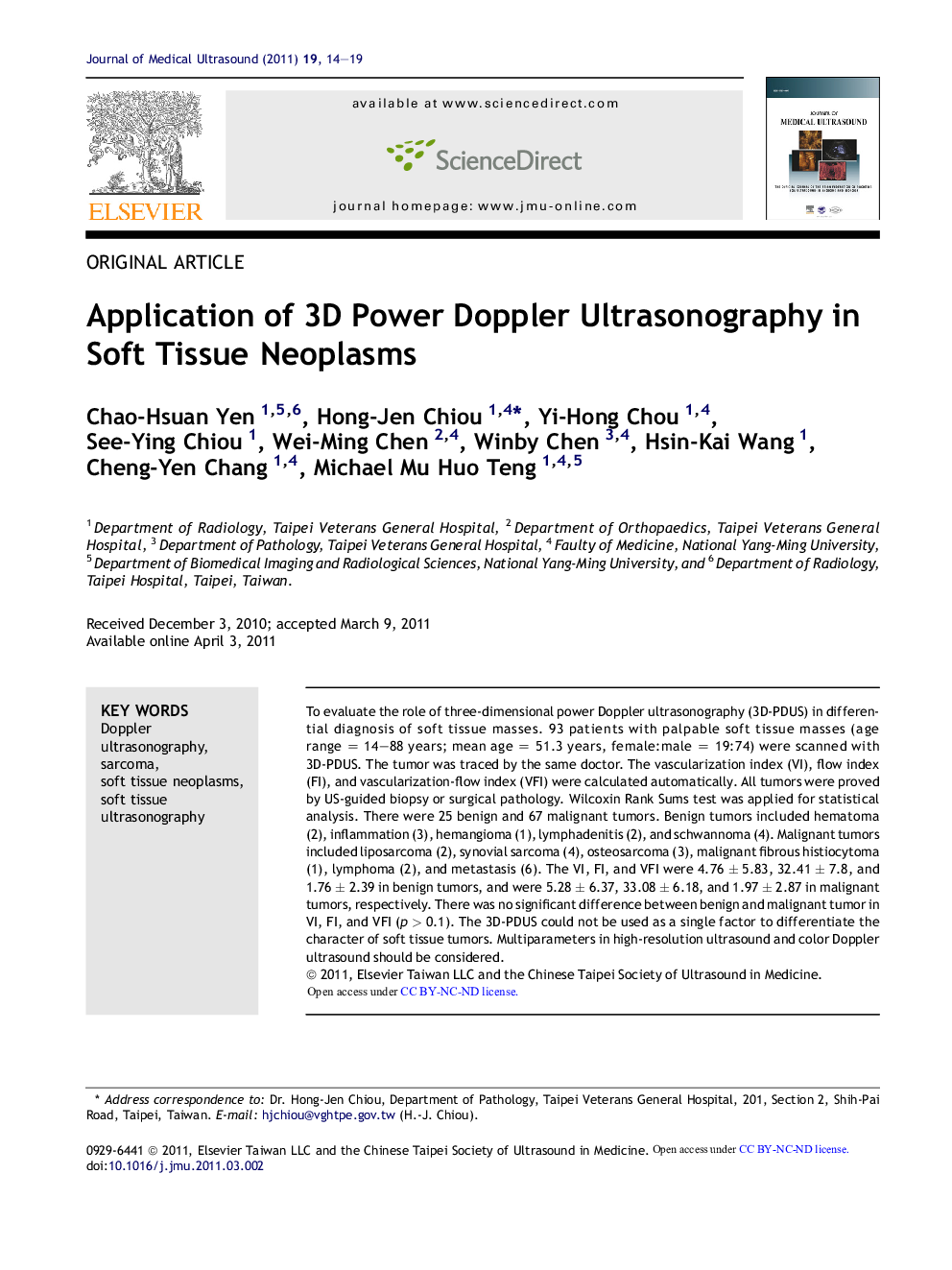| Article ID | Journal | Published Year | Pages | File Type |
|---|---|---|---|---|
| 4233157 | Journal of Medical Ultrasound | 2011 | 6 Pages |
To evaluate the role of three-dimensional power Doppler ultrasonography (3D-PDUS) in differential diagnosis of soft tissue masses. 93 patients with palpable soft tissue masses (age range = 14–88 years; mean age = 51.3 years, female:male = 19:74) were scanned with 3D-PDUS. The tumor was traced by the same doctor. The vascularization index (VI), flow index (FI), and vascularization-flow index (VFI) were calculated automatically. All tumors were proved by US-guided biopsy or surgical pathology. Wilcoxin Rank Sums test was applied for statistical analysis. There were 25 benign and 67 malignant tumors. Benign tumors included hematoma (2), inflammation (3), hemangioma (1), lymphadenitis (2), and schwannoma (4). Malignant tumors included liposarcoma (2), synovial sarcoma (4), osteosarcoma (3), malignant fibrous histiocytoma (1), lymphoma (2), and metastasis (6). The VI, FI, and VFI were 4.76 ± 5.83, 32.41 ± 7.8, and 1.76 ± 2.39 in benign tumors, and were 5.28 ± 6.37, 33.08 ± 6.18, and 1.97 ± 2.87 in malignant tumors, respectively. There was no significant difference between benign and malignant tumor in VI, FI, and VFI (p > 0.1). The 3D-PDUS could not be used as a single factor to differentiate the character of soft tissue tumors. Multiparameters in high-resolution ultrasound and color Doppler ultrasound should be considered.
